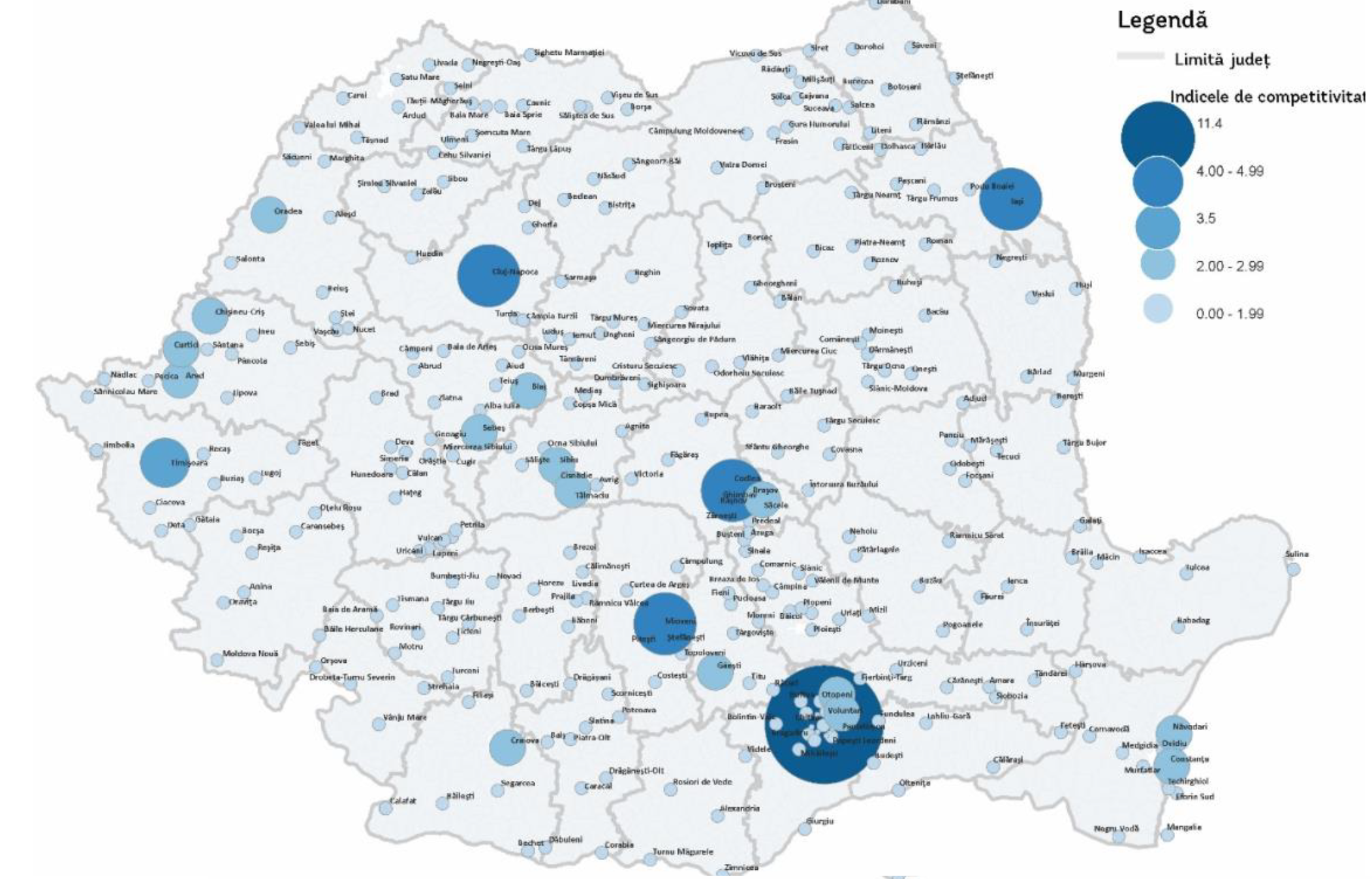
According to the World Bank report, the “city hierarchy” by attractiveness index shows that the most attractive cities remain Bucharest, Cluj-Napoca, Iasi, Timisoara, Craiova, Constanta, Galați, Brasov, Oradea and Ploiesti.
In most cases, a positive correlation can be observed between the attractiveness index and the amount of foreign capital attracted by a specific city (for example, Brasov ranks 8th both in the attractiveness index and in attracting foreign capital), the document shows.
Proximity to the western border offers obvious advantages, as the western region is usually preferred by investors due to its proximity to western European markets. Thus, geographic location is obviously an attractive factor, especially for manufacturing centers.
In Romania, domestic investment, although recovering slightly compared to previous years, remains insufficient to keep the economy afloat

However, the current economic crisis presents real opportunities that Romania should take advantage of. This phenomenon is the biggest opportunity for Romania and its cities re-attachment (current plans by European companies to reduce or repatriate value chains/facilities, given the increasingly problematic distances and trade tensions exacerbated by the pandemic).
Thus, the production capacities withdrawn from other continents must be transferred to Romania if we are to win the competition with other states in the region and demonstrate our competitive advantages. Romania is very cost competitive and industrial production has grown significantly in recent years. These characteristics can turn the country into a magnet for investment, especially in the manufacturing sector.
The relationship between Europe and China is expected to change in the future; many important production facilities of European companies operating in Asia will be transferred to Europe for better control over the supply chain. Romania and other Central and Eastern European countries are particularly attractive for the labor market because salaries are lower than in Western Europe, and in some cases – especially in recent years – similar to those in China.

For example, labor costs in the manufacturing sector in Germany are six times higher than in Romania. Each Romanian city has to develop its own economic profile in order to specialize and attract the necessary capital according to the local development vision.
Competitiveness is often described as an external validation of the urban economy in the age of globalization. Typically, places can be the equivalent of corporations competing for talent and market share in the global economy.
That is why competitiveness and attractiveness are important indicators for analyzing the economic performance of cities and their ability to attract mobile capital, knowledge and innovative companies.
Two indices have been developed to develop the performance of Romanian cities: the competitiveness index (based on current performance) and the attractiveness index (based on potential performance)
Not surprisingly, the most competitive city in Romania is Bucharest, the largest city, which currently competes on a par with other important EU cities in terms of productivity.
It is followed by other developed cities (Cluj-Napoca, Iași, Timisoara, etc.), which are also important economic centers. Competitive secondary cities are essential for better regional performance as they contribute to the growth and development of neighboring areas.
The data showed a positive correlation between economic indicators expressed in GNI per capita and the competitiveness index, which means that a competitive city does offer better opportunities for its citizens.
Other cities (Gimbav, Mioveni, Nevodari, Geshti, Otopeni, etc.) benefit greatly from their proximity to the poles of urban growth, and this is reflected in the level of competitiveness. In addition, it was observed that the value of the index correlates with the level of specialization of the city (for example, Gimbav specializes in the aerospace industry, Mioveni specializes in the automotive industry – both have high values of competitiveness). index).
In short, this means that a higher degree of specialization within a city creates a prerequisite for a higher level of competitiveness. However, highly specialized cities are sensitive to sudden economic changes. Thus, whenever possible, the balance between specialization and diversification must be considered at the local level, the World Bank also recommends.
See the full World Bank report by sector here
Source: Hot News RO
Anna White is a journalist at 247 News Reel, where she writes on world news and current events. She is known for her insightful analysis and compelling storytelling. Anna’s articles have been widely read and shared, earning her a reputation as a talented and respected journalist. She delivers in-depth and accurate understanding of the world’s most pressing issues.